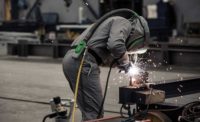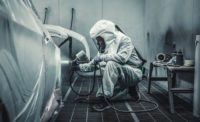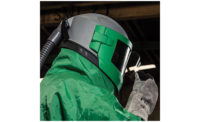Inhalation of toxic gases can kill you. It’s important that you perpetually monitor your breathing air to ensure that you and your employees are breathing air that is safe and free of such gases all the time.
Gases such as carbon monoxide can’t be seen or smelled but are dangerous to your health and your life. Consistent low levels of exposure to CO can cause symptoms similar to that of the flu. The effects are cumulative and can increase the risk of heart disease. High levels of exposure can cause unconsciousness or death. By continuously monitoring your air, you are be immediately alerted that the CO levels are dangerous, allowing you to correct the issue right away.
Another toxic gas is hydrogen sulfide (H2S). This is only present in some industries and environments, for example the oil and gas industry. The smell of H2S resembles that of rotten eggs – which provides one way of easily identifying that the gas exists in your workplace. If H2S is present in your workplace it is imperative that you monitor the levels in breathing air. Inhalation of this gas can cause irritation to the eyes and respiratory system, headaches and nausea. High exposure is life-threatening, as it can attack all your organs, but most commonly the nervous system.
Then there is oxygen. It is important that there is enough oxygen (19.5% - 23.5%) in your breathing air. The lack of oxygen can very quickly lead to suffocation. This seems obvious — so much that it is often overlooked.
Choosing the right device
Thanks to technology, gas detection and airline monitoring is easier than it has ever been. Premium devices can monitor multiple gases simultaneously, so you can ensure you are protected from the most common toxic gases that can be found in the workplace. Here are some more features that can be found in the best gas monitors and that you should look for:
- The ability to monitor multiple gases simultaneously so that you only need to check one device.
- A unit that you can set up and forget about, knowing that it will alert you if there are any issues, For example: unsafe gas levels, calibration required, loss of power.
- One that provides real-time data, so you can assess and fix any issues immediately as they arise.
- Integrated WIFI and network capabilities. This allows managers to view any data relating to the device and the air quality from outside of the immediate work environment.
- Capability to integrate external alarms especially in high-noise environments. Other custom systems can be set up to force your employees to vacate the work area if the air quality is jeopardized.
Look for a device that can simultaneously monitor multiple gases, provides real time data, has integrated WIFI capability and will alert you if there are any unsafe gases in the air. The cost of installing and maintaining air monitoring equipment is far outweighed by the potential cost of ruining a person’s life.






